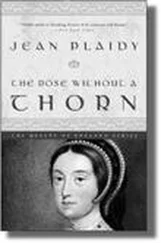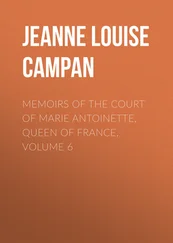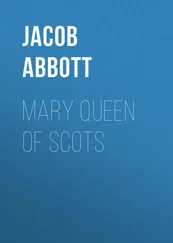Henry Bell - Life of Mary Queen of Scots, Volume 1 (of 2)
Здесь есть возможность читать онлайн «Henry Bell - Life of Mary Queen of Scots, Volume 1 (of 2)» — ознакомительный отрывок электронной книги совершенно бесплатно, а после прочтения отрывка купить полную версию. В некоторых случаях можно слушать аудио, скачать через торрент в формате fb2 и присутствует краткое содержание. Жанр: foreign_antique, foreign_prose, на английском языке. Описание произведения, (предисловие) а так же отзывы посетителей доступны на портале библиотеки ЛибКат.
- Название:Life of Mary Queen of Scots, Volume 1 (of 2)
- Автор:
- Жанр:
- Год:неизвестен
- ISBN:нет данных
- Рейтинг книги:5 / 5. Голосов: 1
-
Избранное:Добавить в избранное
- Отзывы:
-
Ваша оценка:
- 100
- 1
- 2
- 3
- 4
- 5
Life of Mary Queen of Scots, Volume 1 (of 2): краткое содержание, описание и аннотация
Предлагаем к чтению аннотацию, описание, краткое содержание или предисловие (зависит от того, что написал сам автор книги «Life of Mary Queen of Scots, Volume 1 (of 2)»). Если вы не нашли необходимую информацию о книге — напишите в комментариях, мы постараемся отыскать её.
Life of Mary Queen of Scots, Volume 1 (of 2) — читать онлайн ознакомительный отрывок
Ниже представлен текст книги, разбитый по страницам. Система сохранения места последней прочитанной страницы, позволяет с удобством читать онлайн бесплатно книгу «Life of Mary Queen of Scots, Volume 1 (of 2)», без необходимости каждый раз заново искать на чём Вы остановились. Поставьте закладку, и сможете в любой момент перейти на страницу, на которой закончили чтение.
Интервал:
Закладка:
Nor must it be imagined that Mary’s childhood was exclusively devoted to these more scholastic pursuits. She and her young companions, the Scotch Maries and the daughters of Henry, were frequently present at those magnificent galas and fêtes, in which the King himself so much delighted, and which were so particularly in unison with the taste of the times, though no where conducted with so much elegance and grace, as at the French Court. The summer tournaments and fêtes champêtres, and the winter festivals and masquerades, were attended by all the beauty and chivalry of the land. In these amusements, Mary, as she grew up, took a lively and innocent pleasure. The woods and gardens also of Fontainbleau, afforded a delightful variation from the artificial splendours of Paris. In summer, sailing on the lakes, or fishing in the ponds; and in winter, a construction of fortresses on the ice, – a mimic battle of snow-balls, – or skating, became royal pastimes. Mary’s gait and air, naturally dignified and noble, acquired an additional charm from the attention she paid to dancing and riding. The favourite dance at the time was the Spanish minuet, which Mary frequently performed with her young consort, to the admiration of the whole court. In the livelier gailliarde, she was unequalled, as was confessed, even by the beautiful Anne of Este, who, in a pas des deux, acknowledged that she was eclipsed by Mary.
The activity of her body indeed, kept, upon all occasions, full pace with that of her mind. She was particularly fond of hunting; and she and her maids of honour were frequently seen following the stag through the ancestral forests of France. Her attachment to this amusement, which continued all her life, exposed her, on several occasions, to some danger. So early as the year 1559, when hunting in France, some part of her dress was caught by the bough of a tree, and she was cast off her horse when galloping at full speed. Many of the ladies and gentlemen in her train passed by without observing her, and some so near as actually to tread on her riding-dress. As soon as the accident was discovered, she was raised from the ground; but, though the shock had been considerable, she had too manly a spirit to complain, and, readjusting her hair, which had fallen into confusion, she again mounted her horse, and rode home smiling at the accident. 12 12 Whittaker, vol. iv. p. 144.
Another, but more sedentary amusement with Mary, was the composition of devices. To excel in these, required some wit and judgment. A device was the skilful coupling of a few expressive words with any engraved figure or picture. It was an art intimately connected with the science of heraldry, and seems to have suggested the modern seal and motto. The composition of these devices was, as it is somewhere called, only “an elegant species of trifling;” but it had something intellectual in it, which the best informed ladies of the French court liked. An old author, who writes upon this subject, elevates it to a degree of importance rather amusing. “It delights the eye,” he says, “it captivates the imagination, it is also profitable and useful; and therefore surpasseth all other arts, and also painting, since this only represents the body and exquisite features of the face, whereas a device exposes the rare ideas and gallant sentiments of its author; it also excels poetry, in as much as it joineth profit with pleasure, since none merit the title of devices unless they at once please by their grace, and yield profit by their doctrine.”
Mary’s partialities were commonly lasting, and when in very different circumstances, she frequently loved to return to this amusement of her childhood. Some of the emblems she invented, betray much elegance and sensibility of mind. On the death of her husband Francis, she took for her device a little branch of the liquorice-tree, whose root only is sweet, all the rest of the plant being bitter, and the motto was, Dulce meum terra tegit . On her cloth of state was embroidered the sentence, En ma fin est mon commencement ; “a riddle,” says Haynes, “I understand not;” but which evidently meant to inculcate a lesson of humility, and to remind her that life, with all its grandeur, was the mere prologue to eternity. The French historian, Mezeray, mentions also that Mary had a medal struck, on which was represented a vessel in a storm, with its masts broken and falling, illustrated by the motto, Nunquam nisi rectam ; indicating a determination rather to perish than deviate from the path of integrity. 13 13 Mezeray, Histoire de France, tom. iii. p. 50.
When she was in England, she embroidered for the Duke of Norfolk a hand with a sword in it, cutting vines, with the motto Virescit vulnere virtus . In these and similar fancies, she embodied strong and often original thoughts with much delicacy.
In the midst of these occupations and amusements, Mary was not allowed to forget her native country. Frequent visits were paid her from Scotland, by those personally attached to herself or her family. In 1550, her mother, Mary of Guise, came over to see her, accompanied by several of the nobility. The Queen-dowager, a woman of strong affections, was so delighted with the improvement she discovered in her daughter’s mind and person, that she burst into tears of joy; and her Scottish attendants were hardly less affected by the sight of their future Sovereign. Henry, with his young charge, was at Rouen, when the Queen-dowager arrived. To testify his respect for her, he ordered a triumph to be prepared, which consisted of one of those grotesque allegorical exhibitions then so much in vogue; and, shortly afterwards, the two Queens made a public entry into Paris. Mary of Guise had there an opportunity likewise of seeing her son by her first husband, the Duke de Longueville, Mary’s half-brother, but who seems to have spent his life in retirement, as history scarcely notices him. It may well be conceived, that the widow of James V. returned even to the regency of Scotland with reluctance, since she purchased the gratification of her ambition by a final separation from her children. 14 14 Miss Benger’s Memoirs, vol. i. p. 189, et seq.
It was about the same time that Mary first saw Sir James Melville, who was then only a few years older than herself, and who was sent over in the train of the Bishop of Monluc, when he returned after signing the Treaty of Edinburgh, to be one of Mary’s pages of honour. Sir James was afterwards frequently employed by the Queen as her foreign ambassador, and his name will appear more than once in the sequel. We have spoken of him here for the purpose of introducing an amusing anecdote, which he gives us in his own Memoirs, and which illustrates the state of manners at that period. Upon landing at Brest, the Bishop proceeded direct to Paris. But Sir James, who was young, and could hardly have endured the fatigue of this mode of travelling, was intrusted to the care of two Scotch gentlemen, who had come over in the same ship. Their first step was to purchase three little “naigies,” on which they proposed riding to Paris, any thing in the shape of a diligence being out of the question. To ensure greater safety on the journey, three others joined the party, – two Frenchmen, and a young Spaniard, who was on his way to the College at Paris. On the evening of the first day, they arrived at the town of Landerneau, where all the six were lodged in one room, containing three beds. The two Frenchmen slept together in one, the two Scotsmen in another, and Melville and the Spaniard in the third. The company on the whole does not appear to have been of the most respectable kind; for, as Melville lay awake, he heard “the twa Scotchmen devising how they were directed to let him want naething; therefore, said they, we will pay for his ordinair all the way, and shall count up twice as meikle to his master when we come to Paris, and sae shall win our ain expenses.” The two Frenchmen, on their part, thinking that nobody in the room understood French, said to each other, “These strangers are all young, and know not the fashion of the hostelries; therefore we shall deal and reckon with the hosts at every repast, and shall cause the strangers pay more than the custom is, and that way shall we save our expenses.” At all this Melville, as he tells us, could not refrain from “laughing in his mind,” and determined to be upon his guard. “Yet the twa Scotch young men,” he adds in his antique phraseology, “would not consent that I should pay for myself, hoping still to beguile the Bishop, but the Spaniart and I writ up every day’s compt.” The Frenchmen being foiled in their swindling intentions, had recourse to a still bolder manœuvre. One day, as the party were riding through a wood, two other Frenchmen, who had joined them a short time before, suddenly leapt off their horses, and, drawing their swords, demanded that the others should deliver up their purses. Melville and his Scotch friends, however, were not to be thus intimidated. They also drew their swords, and prepared for resistance; on seeing which, the Frenchmen affected to make a joke of the whole affair, saying that they merely wanted to try the courage of the Scotchmen, in case they should have been attacked by robbers. “But the twa last loons,” says Melville, “left us at the next lodging; and the twa Scotch scholairs never obtenit payment frae the Bishop for their pretendit fraud.” Sir James arrived in safety at Paris, having taken thirteen days to ride from Brest to the capital. 15 15 Melville’s Memoirs of his own Life, p. 12.
Интервал:
Закладка:
Похожие книги на «Life of Mary Queen of Scots, Volume 1 (of 2)»
Представляем Вашему вниманию похожие книги на «Life of Mary Queen of Scots, Volume 1 (of 2)» списком для выбора. Мы отобрали схожую по названию и смыслу литературу в надежде предоставить читателям больше вариантов отыскать новые, интересные, ещё непрочитанные произведения.
Обсуждение, отзывы о книге «Life of Mary Queen of Scots, Volume 1 (of 2)» и просто собственные мнения читателей. Оставьте ваши комментарии, напишите, что Вы думаете о произведении, его смысле или главных героях. Укажите что конкретно понравилось, а что нет, и почему Вы так считаете.












